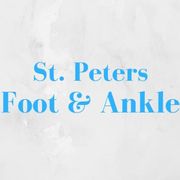4 Common Questions About Metatarsalgia

An active lifestyle that involves jumping and running can result in metatarsalgia, a type of foot condition. It affects the metatarsal bones—those connecting your foot arch to your toes—resulting in pain and inflammation in the balls of your feet. Below are answers to metatarsalgia questions, so you can have an informed discussion with a podiatrist if the pain continues or worsens.
Frequently Asked Questions About Metatarsalgia
What are the symptoms?
When the metatarsal bones become sore from overuse, the muscles around get irritated. You’ll experience pain when walking, standing, and running. In addition to pain in the balls of your feet, you may have tingling or numbness in your toes, pain when you flex your feet, burning, sharp, or shooting foot pain, and a feeling like there are pebbles in your shoes.
What causes the condition?
 Overuse from high-impact sports and training such as running cause metatarsalgia flare-ups, especially with incorrect form or poorly-fitting shoes. A high arch increases the risk, as do health issues and injuries such as stress fractures, obesity, stiff ankles, and arthritis. Age also plays a role in metatarsalgia, because the pads of feet thin over time. High heel shoes heighten the risk as well.
Overuse from high-impact sports and training such as running cause metatarsalgia flare-ups, especially with incorrect form or poorly-fitting shoes. A high arch increases the risk, as do health issues and injuries such as stress fractures, obesity, stiff ankles, and arthritis. Age also plays a role in metatarsalgia, because the pads of feet thin over time. High heel shoes heighten the risk as well.
How can you treat metatarsalgia?
Wear well-fitting, comfortable shoes that support your feet and give your toes room to move. Avoid high-impact training exercises and sports until the condition heals and rest with ice packs wrapped around your feet to soothe the pain and reduce inflammation. Keep your feet elevated and perform stretches to loosen muscles. You can also take over-the-counter pain relievers to manage your symptoms.
When should you see a podiatrist?
If the pain continues despite ice pack therapy and rest, consult your podiatrist. The doctor may take an X-ray or MRI of your feet, perform a physical examination, and will likely recommend custom orthotics to support and cushion your feet. Your podiatrist may also suggest metatarsal pads for extra cushioning and exercises that help strengthen foot muscles without stress, such as pool exercises. If your symptoms are severe, you might need corrective surgery.
Don’t let metatarsalgia make daily activities difficult. Schedule an appointment with St. Peters Foot & Ankle: Samual T. Wood-DPM to determine a treatment course. The podiatrists offer two convenient locations in St. Peters and Florissant, MO, and serve patients within a 35-mile radius of both. Call the foot and ankle center with over 20 years of experience at (636) 720-0190 to make your appointment or visit the podiatrists online for more information.
About the Business
Have a question? Ask the experts!
Send your question

